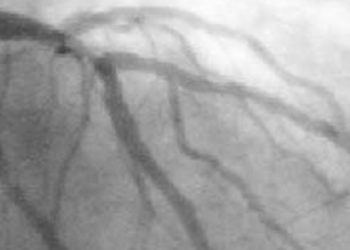Spinal anesthesia for hip fracture surgery associated with increased pain and analgesic use
1. Spinal anesthesia, as compared with general anesthesia, was associated with a small but significant increase in pain and prescription analgesic use after hip fracture surgery.
2. Patient satisfaction with care did not differ between groups.
Evidence Rating Level: 1 (Excellent)
Study Rundown: Spinal and general anesthesia confer similar survival and recovery outcomes for hip fracture surgery. Thus, the choice between these anesthesia procedures may be determined by patient preference based on associated risks and benefits. The present randomized trial evaluated pain, analgesic use, and satisfaction associated with spinal and general anesthesia administration for patients undergoing hip fracture surgery. Patients were followed for one year after surgery. Patients who received spinal anesthesia reported significantly more pain during the first day after surgery. Further, spinal anesthesia was also associated with significantly more prescription analgesic use in the first 60 days after surgery. There were no significant differences between groups in satisfaction with the level of care. One limitation of this study is the absence of data on nonopioid analgesic medications or nonpharmacologic pain treatments during hospitalization or the types and dosages of prescription analgesic medication after discharge, as the dosage and side effects of analgesic medication can impact the patient’s perception of pain and satisfaction. Another limitation is the reduced representation of racially diverse and male participants, limiting the generalizability of study findings.
Click to read the study in AIM
In-Depth [randomized controlled trial]: In the present study, patients over the age of 50 undergoing hip fracture surgery (n=1,600) were randomly assigned to receive spinal or general anesthesia in a 1:1 ratio. In the spinal anesthesia group, 8% of participants received general anesthesia and 1.3% had missing data. In the general anesthesia group, 3.5% of participants received spinal anesthesia and 1% had missing data. Patients were followed for one year after surgery and interviewed on postoperative days one to three, 60, 180, and 365. The interview assessed the patient’s perception of pain, use of prescription analgesics, and satisfaction with anesthesia care. Patients in the spinal anesthesia group reported more pain on a numerical rating scale of 0 (no pain) to 10 (worst pain imaginable) during the first day after surgery (worst pain in the last 24 hours: mean difference in rating, 0.4 (95% Confidence Interval [CI], 0.12 to 0.68); average pain over the last 24 hours: mean difference in rating between groups, 0.43 (95% CI, 0.15 to 0.72)). Pain levels did not differ between groups at the 60-, 180-, or 365-day interviews. Patients in the anesthesia group also reported increased use of prescription analgesics at the 60-day interview (Relative Risk [RR], 1.33; 95% CI, 1.06 to 1.65). Prescription analgesic use was not significantly different between groups at the 180- or 365-day interview. There were no significant differences between groups in the levels of satisfaction with anesthesia care at any time point. This study provides preliminary evidence of the potential benefits of general anesthesia for patient experience and pain management as compared to spinal anesthesia.
Image: PD
©2022 2 Minute Medicine, Inc. All rights reserved. No works may be reproduced without expressed written consent from 2 Minute Medicine, Inc. Inquire about licensing here. No article should be construed as medical advice and is not intended as such by the authors or by 2 Minute Medicine, Inc.







